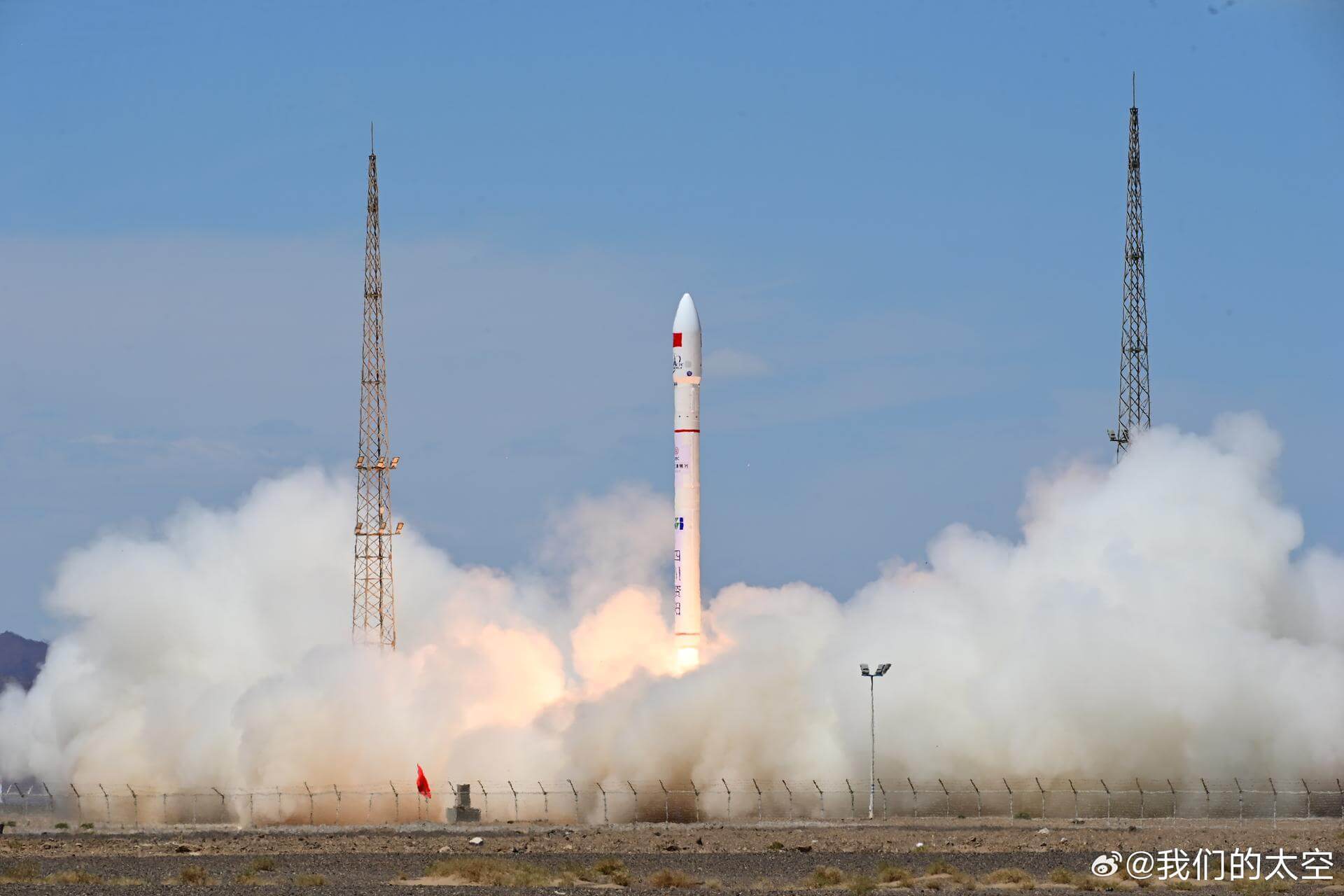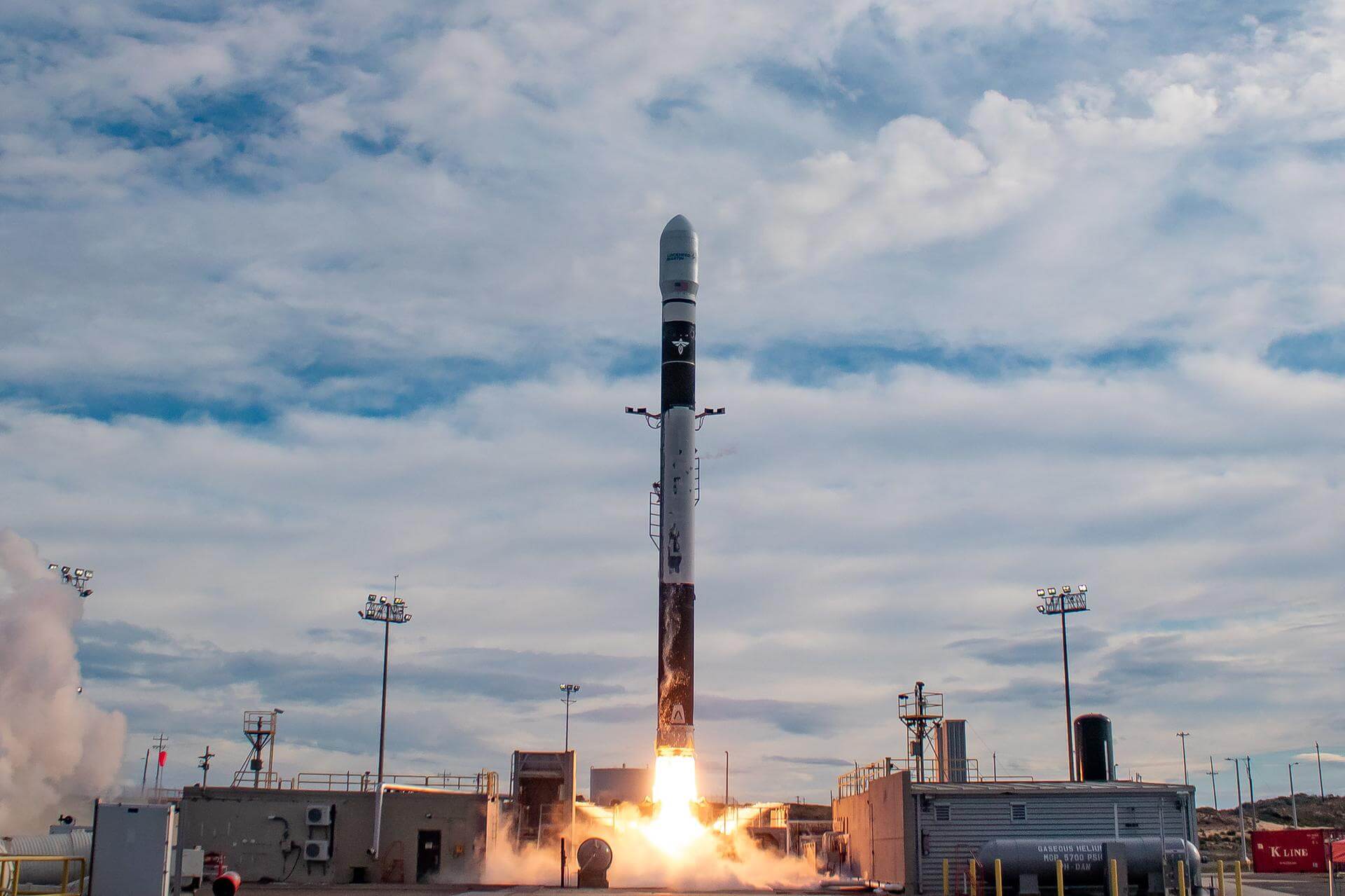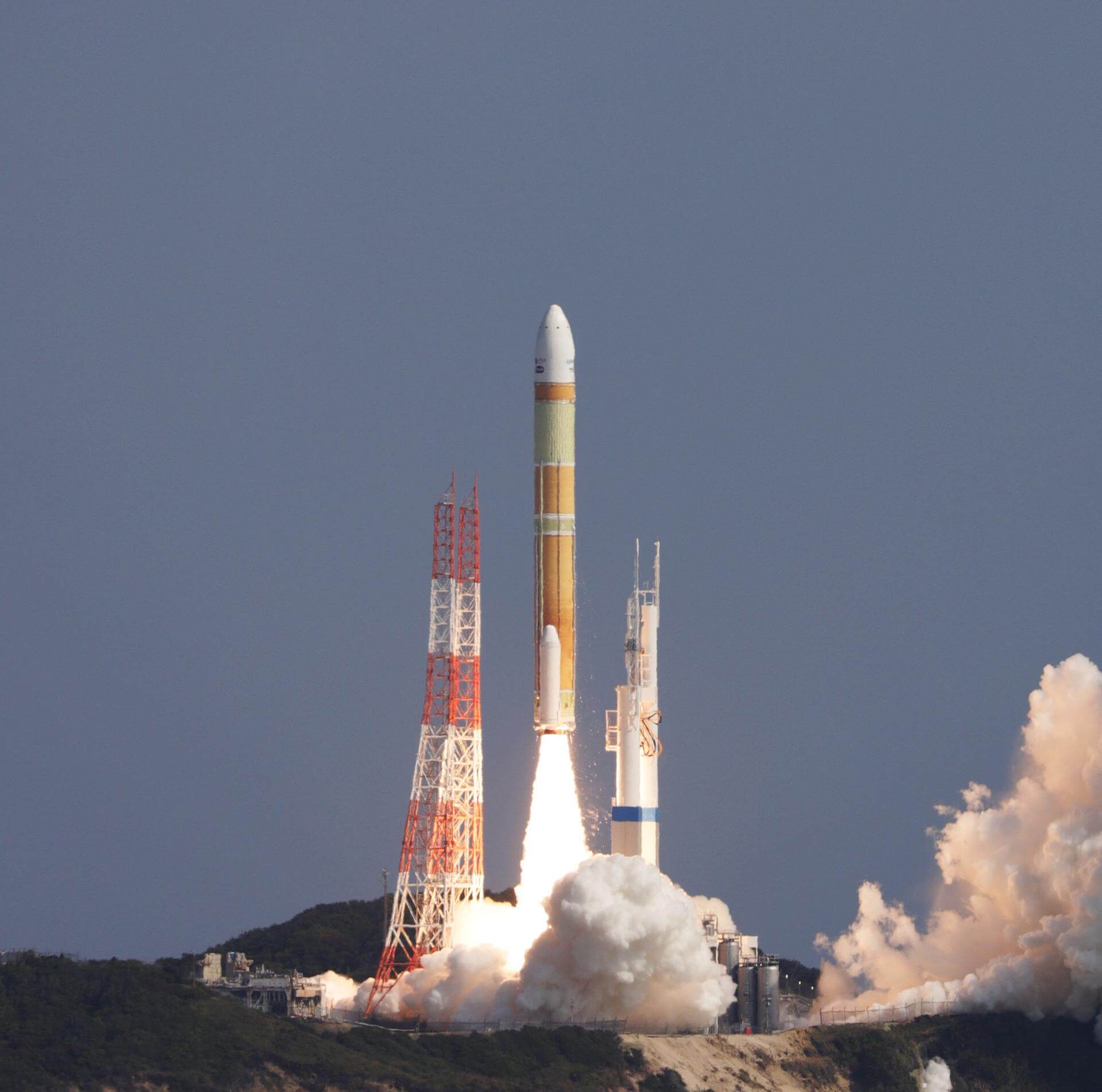· space brief · 7 min read
Space Brief 5 Jun 2025
Today's brief highlights a significant geospatial data collaboration between Maxar and Saab, defense budget discussions affecting satellite deployments, and the naming of new military command chiefs.

📄Top Stories
Maxar partners with Saab, enabling unprecedented access to geospatial data for defense applications. The U.S. Senate and House discuss adjustments in the defense budget that could impact satellite spending. Additionally, the Pentagon appoints new leaders for crucial military commands, emphasizing advancements in unmanned and AI satellite integration.
📰Detailed Coverage
Maxar Partners with Saab for Geospatial Defense Applications
Maxar Technologies has entered into a significant agreement with Saab to provide advanced geospatial data services for defense-related applications. This collaboration allows Saab access to Maxar’s high-resolution satellite imagery, 3D data, and cutting-edge navigation technology. The partnership suggests a strategic move to capitalize on Maxar’s satellite capabilities for enhanced defense solutions.
From a technical perspective, this partnership could enhance defense operations by providing better situational awareness and decision-making capabilities through high-quality data. For satellite tracking enthusiasts, this emphasizes the growing importance of commercial satellite data in defense contexts, highlighting features available on our web app that allow users to track similar satellite activities.
Read the full story: SpaceNews
Senate Defense Budget Adjustments Affect Satellite Spending
The Senate has unveiled its version of the $150 billion defense reconciliation package, shifting focus from naval to aerial and space-based capabilities. This budget adjustment suggests a potential increase in spending on satellite technology to enhance national security. This move marks a strategic redirection towards space assets, reflecting an evolving priority in defense strategies.
The potential increase in satellite funding could see more resources allocated to new satellite launches or upgrades to existing orbital assets. For those interested in tracking these developments, our web app offers tools to monitor new satellite deployments and activities resulting from these policy changes.
Read the full story: Breaking Defense
Pentagon Chooses Leaders for Key Military Commands
The Pentagon has announced its picks for the new chiefs of U.S. Central Command (CENTCOM), U.S. Africa Command (AFRICOM), and U.S. Special Operations Command (SOCOM). Notably, Vice Adm. Brad Cooper, an advocate for unmanned and AI-assisted technology, is nominated to lead CENTCOM. This appointment underscores the increasing integration of AI and satellite-based systems in military operations.
Cooper’s background in promoting innovative technologies at the U.S. Fifth Fleet suggests a future where satellite and unmanned systems will play a bigger role in military strategy. This development might interest satellite trackers and developers focusing on defense applications, spotlighting the future direction of military satellite use.
Read the full story: Breaking Defense
Israeli Defense Exports and Technological Advancements
Israel has reported a record $14.7 billion in defense exports, attributed to the global demand for its advanced technologies. Despite regional tensions, Israeli tech, particularly in unmanned systems and satellite communications, has garnered international acclaim. This growth reflects the strengthening of Israel’s position as a leader in defense technology.
For satellite enthusiasts, this highlights how technological advancements in one region can influence global defense dynamics. Our web app provides insights and tracking capabilities for international satellite systems, offering users a way to observe these technological impacts in orbit.
Read the full story: Breaking Defense
UK’s Enhanced Defense Capabilities
The UK is ramping up its defense capabilities as part of its Strategic Defence Review, aiming for a stronger transatlantic security posture. Ambassador Peter Mandelson outlines key defense initiatives, including enhanced satellite technology and cyber defense measures. This move aligns with the UK’s focus on modernizing its defenses to face emerging global threats.
These defense enhancements could see a rise in satellite systems that improve surveillance and reconnaissance abilities, offering new areas for satellite tracking and analysis. Tracking these developments is facilitated by our app’s real-time monitoring tools.
Read the full story: Breaking Defense
🛰️Satellite Spotlight
- Satellite Name: AUREOLE 2
- NORAD ID: 07003
- Launch Date: December 26, 1973
- Mission: AUREOLE 2 was designed for scientific research focused on the Earth’s magnetosphere.
- Orbit: Low Earth Orbit (LEO)
- Operator: Ministry of Defense of the USSR and the French National Centre for Space Studies (MOM/CNES)
- Fun Fact: AUREOLE 2 was part of a series of satellites aimed at understanding the magnetic field and radiation environment surrounding Earth, contributing to the fields of space science and atmospheric studies.
Track this satellite in real-time on our web app: Track AUREOLE 2
🌌Space Weather
Current space weather shows Enhanced solar wind (683 km/s).
R0 - S0 - G0
Next 24 Hours: In the upcoming 24 hours, satellite operators can expect no risk of radio blackouts and no risk of solar radiation storms, making it a favorable period for satellite communications. However, they should be aware of moderate geomagnetic activity with minor geomagnetic storms forecasted. Specifically, G1 (Minor) to G2 (Moderate) geomagnetic storming is likely on 05 Jun due to waning effects from a coronal mass ejection (CME) and coronal hole high-speed stream (CH HSS) influences. For ground-based radar and telescope operators, heightened geomagnetic activity may lead to minor disturbances, warranting close monitoring. Moreover, LEO satellites may experience increased drag during these storms, thus necessitating potential adjustments to orbital maintenance strategies.
Beyond: Looking ahead from 02 June to 28 June 2025, solar activity is projected to reach moderate levels with a classification ranging from R1-R2 (Minor-Moderate), alongside a chance for R3 (Strong) events, particularly as Region 4100 transitions across the west limb. Throughout this period, a possibility of M-class (R1-R2) X-ray activity will persist due to multiple active regions both currently visible and anticipated to emerge from the far side of the Sun. Operators should note that the current proton event is expected to conclude on 02 Jun, with no further occurrences anticipated at geosynchronous orbit. The greater than 2 MeV electron flux at geosynchronous orbit is projected to reach high levels on several dates in June, influenced by recurrent coronal hole activity. Additionally, geomagnetic conditions are expected to remain mostly elevated due to influences from recurrent coronal holes. Expect G1 (Minor) to G2 (Moderate) geomagnetic storms on 02-03 Jun, with unsettled to active conditions likely on 04-07 and 10-12 Jun. Unsettled to G1 (Minor) conditions may also persist on 13-28 Jun, driven by varying polarities of coronal hole high-speed streams. Operators in all domains should keep these trends in mind for managing satellite operations and ensuring robust communication capabilities throughout this forecast period.
🚀 Upcoming Space Launches
June 5
- China Aerospace Science and Technology Corporation Long March 6A:
- G60 Polar Group TBD from Taiyuan Satellite Launch Center, People’s Republic of China (20:36 UTC) 18 Low Earth Orbit communication satellites with Ku, Q and V band payloads for the G60 constellation operated by Shanghai Spacecom Satellite Technology (SSST).
June 7
- SpaceX Falcon 9:
- Sirius SXM-10 from Cape Canaveral SFS, FL, USA (03:19 UTC) SXM-10 is the 11th high-powered, digital, audio radio satellite built by Maxar (SSL) for SiriusXM.
June 8
- SpaceX Falcon 9:
- Starlink Group 15-8 from Vandenberg SFB, CA, USA (13:34 UTC) A batch of satellites for the Starlink mega-constellation - SpaceX’s project for space-based Internet communication system.
June 10
- SpaceX Falcon 9:
- Axiom Space Mission 4 from Kennedy Space Center, FL, USA (12:22 UTC) This is a Crew Dragon flight for Axiom Space, carrying a commander and three private astronauts to the International Space Station.
- SpaceX Falcon 9:
- Starlink Group 12-24 from Cape Canaveral SFS, FL, USA (13:03 UTC) A batch of satellites for the Starlink mega-constellation - SpaceX’s project for space-based Internet communication system.
- Rocket Lab Electron:
- The Mountain God Guards (iQPS Launch 3) from Rocket Lab Launch Complex 1, Mahia Peninsula, New Zealand (15:45 UTC) Synthetic aperture radar Earth observation satellite for Japanese Earth imaging company iQPS.
June 13
- SpaceX Falcon 9:
- Starlink Group 15-6 from Vandenberg SFB, CA, USA (01:46 UTC) A batch of satellites for the Starlink mega-constellation - SpaceX’s project for space-based Internet communication system.
- United Launch Alliance Atlas V 551:
- Project Kuiper (KA-02) from Cape Canaveral SFS, FL, USA (18:29 UTC) Project Kuiper is a mega constellation of satellites in Low Earth Orbit to offer broadband internet access, managed by Kuiper Systems LLC, a subsidiary of Amazon.
June 21
- SpaceX Falcon 9:
- Transporter 14 (Dedicated SSO Rideshare) from Vandenberg SFB, CA, USA (00:00 UTC) Dedicated rideshare flight to a sun-synchronous orbit with dozens of small microsatellites and nanosatellites for commercial and government customers.
Note: Launch dates and times are subject to change due to technical or weather considerations.

Maurice Stellarski




